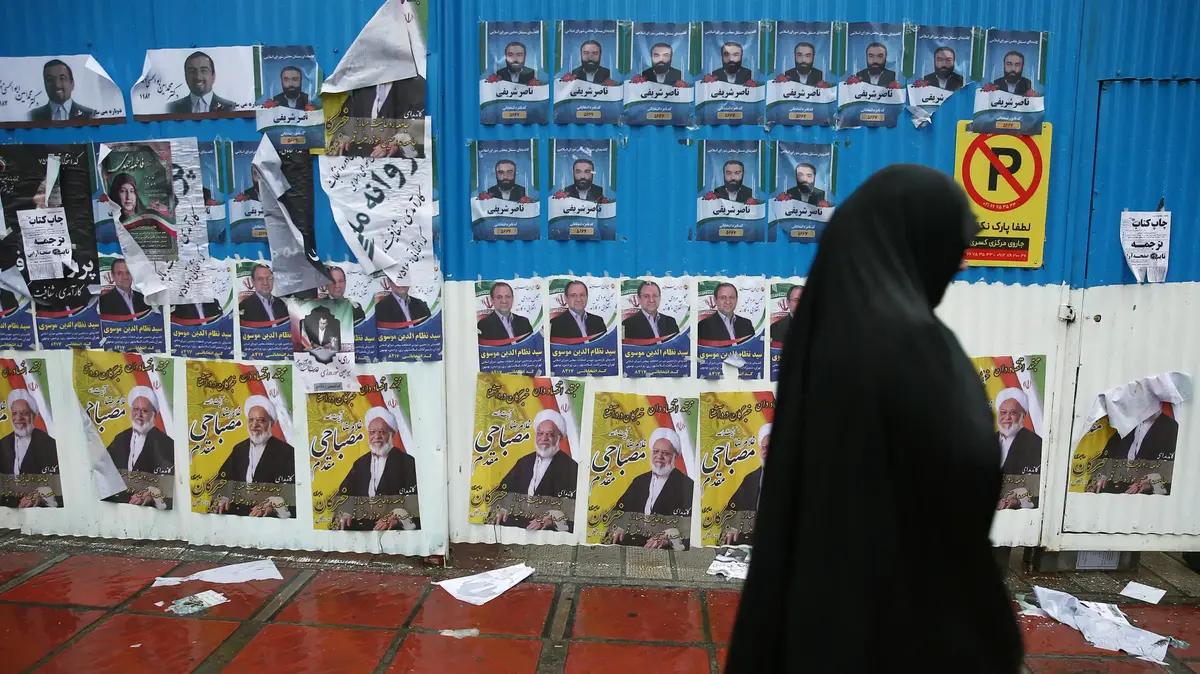In the shadow of an economic and political crisis and the killing of hundreds of protesters: Iranians go to the polls
Iran's voters are expected to elect 290 lawmakers in the first election since leaving the nuclear deal. Women and young people make up the majority of voters, with only about 50% expected to vote, due to public outrage over the regime's coping with the political and economic crises surrounding the Islamic Republic.
In the shadow of an economic and political crisis and the killing of hundreds of protesters: Iranians go to the polls
Photo: ReutersMiddle-aged men are featured on campaign posters and online ads are posted this week ahead of the Iranian parliamentary election, even though women and young people make up the majority of voters. About one-third of Iran's electorate consists of young people aged 18 to 30, and 49.9% of voters are women, according to official figures. Both groups have previously been strong supporters of candidates who they think may ease the restrictions on social life.
However, disillusionment among voters who are interested in change, from what they see as the failure of pragmatic President Hassan Rouhani in the fight to strengthen his freedoms, may leave some at home. "I voted in the past because I thought it would bring a little more freedom. It was a very different time," said a Tehran resident who runs a food company, refusing to be identified. She said she wasn't going to vote.
The turnout is seen as a critical test of the regime's popularity in the Islamic Republic. About 62% of eligible voters took part in the 2016 parliamentary elections and about 66% in 2012. The upcoming election is expected to be around 50%, according to a Supervisory Board spokesman, the body responsible for the election. The low percentage is expected despite the directive of Iran's supreme leader Ali Khamenei to all Iranians, saying that voting is a "religious duty."
More in Walla! NEWS
Gulf states give cold shoulder, and Lebanese prime minister host Iranian corona virus has spread to Iran: Two civilians died of virus after Suleimani assassinationWoman in hijab alongside election posters in Tehran (Photo: Reuters)
Posters on Tehran streets ahead of Iran's elections, February 20, 2020 (Photo: Reuters, Reuters)
The elections formed as a referendum on the Shi'ite elite's control of the political and economic crises that surround the Islamic Republic. As a result, social reform issues such as ending laws that impose penalties and jails on women if their hair is not fully covered or wearing modesty are considered marginal. In recent years, thousands of women have posted videos and pictures of themselves without their headgear (hijab) in public, as part of a campaign that was largely conducted online.
"I want to vote, it's my duty as a citizen," said 19-year-old Stara of the city of Tiberias. "But I will only vote in free elections. These are not free elections." 23-year-old unemployed resident of Tehran said, "Why would I even bother to vote when the result changes nothing?"
Call for 12 detention from Abin Prison, some of which took part in protest against hijab law, to boycott elections posted on social networks, and echoed calls by some Iranian reformist politicians and human rights activists. One video released this week on social networks showed a young man tearing up election banners.
About one-third of Iran's electorate consists of young people aged 18 to 30. Election atmosphere in Tehran (Photo: Reuters)
Posters on Tehran streets ahead of Iran's elections, February 20, 2020 (Photo: Reuters, Reuters)
Voters are expected to elect 290 lawmakers in Iran's first election since US President Donald Trump removed his state from the 2015 nuclear deal between Tehran and the major powers. It will examine sentiment about Iran's leadership and crisis management, including the killing of hundreds of protesters against the government by security forces in November and almost a war with the United States following the assassination of Iranian general Suleimani.
More in Walla! NEWS More in Walla! NEWSEnd of moderates: Iran's extremists on their way to take over parliament
To the full articleThe economic burden hurts women more. Tehran election posters (Photo: Reuters)
Posters on Tehran streets ahead of Iran's elections, February 20, 2020 (Photo: Reuters, Reuters)
Another problem that is more damaging to Iranian women and young women is the economic slump that is making it difficult for many in the country to make ends meet, exacerbated by US sanctions. The unemployment rate among Iranians aged 18-35 is 17.9%, but for women in that age range it is 29.3%, according to official statistics released by the Iranian Statistics Center in December.
The IMF predicted that the economy would shrink by 9.5% in 2019, with growth expected to remain unchanged in 2020. Inflation surged 38% last year. Even without the difficulties caused by the sanctions, many Iranians blame the country's mismanagement and corruption as factors that have hampered the country's economic performance. "The system is corrupt," said Afshin, a 25-year-old Sudant from Tehran. "My vote will make them stay in power, so there is no vote."

